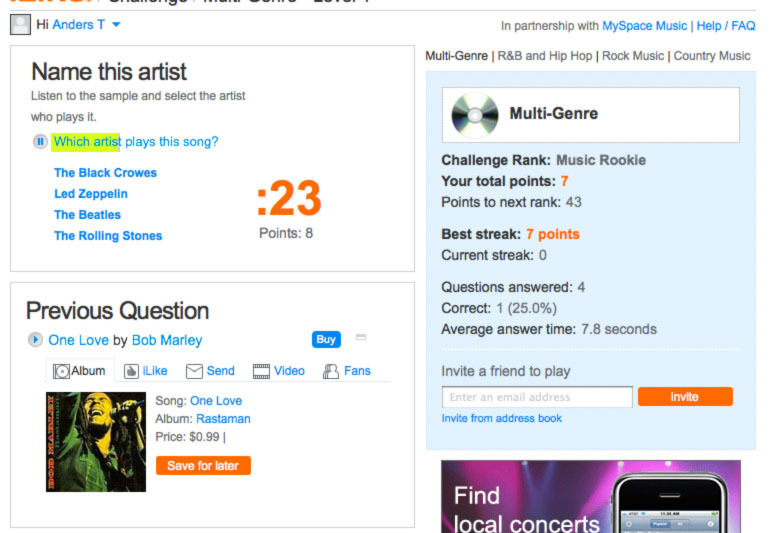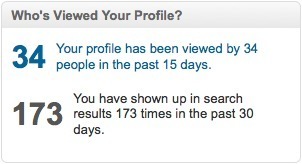The profession of improving usability asks how we best help our users fulfill their goals. The goal and task orientation of usability is carved into stone in the ISO standard definition for what usability is. There is however a part of the usability profession that can’t be concerned with a clear goal.
What if your users do not have a clear purpose for visiting a website? What if we need to help them provide a purpose? Are we then talking User Experience (UX)? Are we improving usability for our users if we help them solve a goal they didn’t first know they had?
Heavy task orientation assumes that our users have an urge to pull: to complete the task they had in mind or to find the information they were looking for. Users who pull have an extraordinarily large motivation to finish the task they are trying to complete.
However, in many other cases our users do not have a clear task to accomplish. They might not even have a clear purpose of visiting your website other than wasting time, having fun, getting a laugh, “surfing around”, or just keeping updated. There is no pull that motivates them in a specific direction, but they’re somewhat open to being pushed.
Push and pull can be defined as to opposing strategies for influencing your users – or two different modes your users can be in.
Push vs Pull
Pull
Users with a large motivation to finish the task they are trying to complete. They visit your site with a formulated purpose, which they try to pull.
Push
Users without motivation to finish a specific task are more open for external influence. Push your message to your users in hope that they can be influenced to take action.
Push
When we design to influence our users through a push strategy, we begin by forecasting their needs and then designing the most efficient system to ensure everything our users need is available at the right time and the right place. This is at best a carefully scripted mechanism which can deliver a useful service. Most often however, push becomes just another call-out for attention.
The premise of push is that the “pusher” knows what is in the best interest of the user – or at least what triggers a pull in the user. The pusher believes to have found a way to apply the right mechanisms and triggers in order to ensure success. As it is hard to predict future behavior, push tends to be a replication of past experience tweaking the current environment by minor changes.
The push strategy is used all over. Media is programmed, packaged, and pushed to users based on their anticipated needs. Pushing is editing the bigger picture and tailoring it for the end user. Some would say that push is knowing better than the users – its utilizing a strategy that is not afraid to say “Do this, not that” or “This is better than that!”.
Most push strategies utilize emails, twitter, facebook, or merely a front page full of content which the user can stumble upon and find interesting.
Pull
Utilizing pull is trying to find an intrisic way to motivate people to act.
When pull works best, users can easily find and access resources when they need them. A prime example is search: users query what they want and results are delivered.
An even more sophisticated form of pull is a rather serendipitous one. We go to the places where the chance of making it is bigger. We go where the chance of being lucky or running into the right people is bigger. Software developers move to Silicon Valley, country musicians to Nashville, aspiring super-models to Paris or New York, skateboarders to skateboarding.com, and designers to Smashing magazine or something similar. Users tend to go where they have the biggest chance of running into what they need in order to take the next step – even if they don’t exactly know what that next step is. We go to social media sites in order to run into old friends, new acquaintances, and discover people who might be useful for us: we go there to let these things happen to us.
Online communities is a great example of the pull strategy being applied well. Here, users with shared interests, but far apart from each other hang out in online communities to learn from people better or as good as themselves.
Going from push to pull
The art of it all is going from push to pull. It’s striving for delivering value to the end-user when he or she pulls it rather than trying to push things that most likely are irrelevant.
Utilizing pull is trying to find an intrinsic way to motivate people to act. To motivate people to have a purpose or end-goal. Going from push to pull is moving the burden to the users: letting the users take action instead of you. Going from push to pull is easing the cognitive load on the user and letting the user explore – access, attract, and achieve rather than being instructed.
Examples of great pull in traditional push environments
iLike.com music challenge
iLike.com once had a music quiz where the user should guess what song was playing within 30 seconds. A quick answer would be rewarded with more points than a late answer. The more points gathered, the higher rank the user would receive.
iLike.com successfully converted a typical push situation into a pull. Instead of trying to force all sorts of music down the throat of the user, just to play something (push), a pull is created around the notion of gathering points. The user is provided with a purpose – a task. In the process, iLike.com learns a great deal about the user’s music preferences (a knowledge about certain music can indicate a preference toward that) and allows for a serendipitous music session where the user gets the opportunity to stumble upon music that he likes.

LinkedIn.com
LinkedIn.com wants you to browse and interact with your business acquaintances. The straight forward way of using LinkedIn.com is to browse for people you know or are interested in when you feel the pull to do so.
However, LinkedIn.com successfully applies several mechanisms to let the user want to pull more. They do so by providing interesting tasks that was before visiting linkedin.com unknown to be interesting for the user. One such task is to stalk the people who showed interest in you. It is interesting when the user sees it, and provides a reason to come back and check at a later time.

3 comments
Jen @ St Louis Web Design on Dec 05, 2011
You pose an interesting question, what if users don’t have a clear purpose in coming to your site. I think getting users to “pull” is all about getting them engaged. If they get to your site and they aren’t engaged then they’ll leave. If they are engaged then they’re more likely to convert, if the calls to action are clear, and the site is more successful.
Anders Toxboe on Dec 05, 2011
@Jen: That’s the whole point: getting users to pull when there is no clear goal to pull is to engage them in new goals.
If you succeed when you are able to provide alternate goals that are interesting enough for users to engage in.
Jeff on Feb 02, 2012
How could the pull technique be utilized on ecommerce sites that typically don’t draw heavy repeat visitors?
Comments have been closed